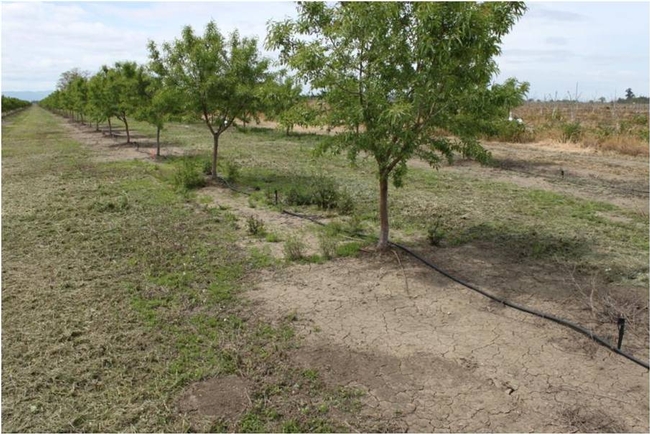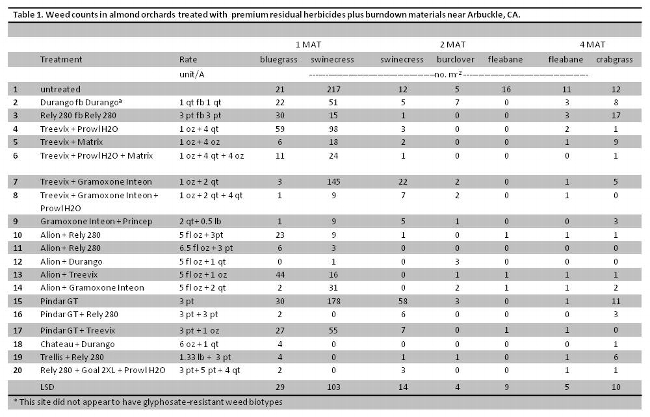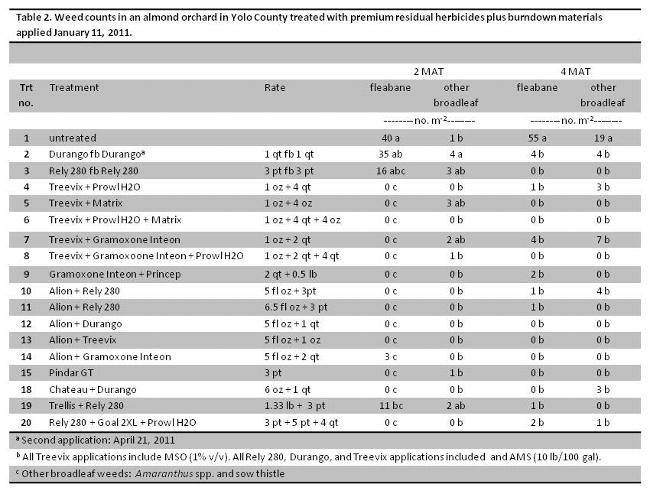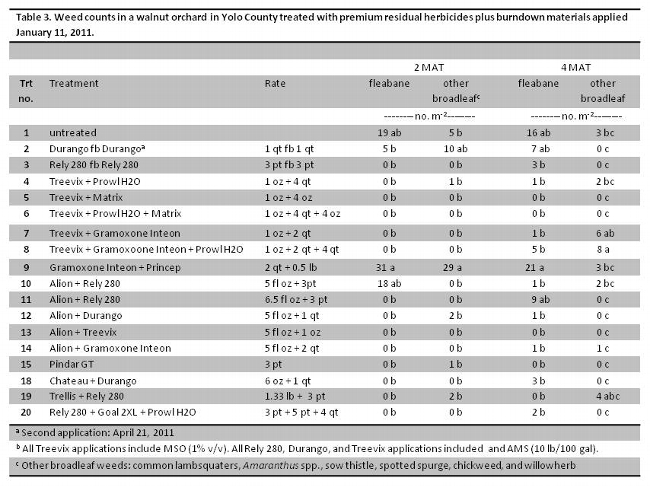Jan 4, 2012
Although many orchard weed managers are waiting for rain (or at least a chance of rain) before putting out their dormant-season herbicide applications, I thought I'd post a few results from three 2011 residual herbicide trials focused on hairy fleabane.
Brad

Field experiments were conducted in an almond and walnut orchard near Davis, CA and an almond orchard near Arbuckle, CA to evaluate premium residual herbicides plus burndown materials for dormant season application in tree nut crops. Several newer materials were compared to grower standards for their relative efficacy against hairy fleabane and a wide assortment of winter and summer annual weeds in young almond and walnut orchards. Treatments were applied using a CO2 backpack sprayer calibrated to deliver 20 GPA on January 11, 2011 (and retreated April 21, if needed) at the Davis site and Februrary 23, 2011 at the Arbuckle site. The experiments were arranged as randomized complete block with 8- by 40-ft (included 3 trees) plots and treatments were replicated four times. Weed densities were determined approximately 1, 2, and 4 months after treatment (MAT).
You can look through the tables below and draw your own conclusions but here's what jumped out at me:
At Arbuckle, the orchard was mature and there was not a huge population of hairy fleabane and what was there was fairly well controlled with Durango indicating that the population is not resistant to glyphosate (Table 1). All the residual herbicides controlled most of the weeds about as well as the grower standards (Chateau + Durango; and Rely 280 + Goal 2XL + Prowl H2O).

At both of the Davis sites, fleabane control was fairly poor after one Durango application but the second application seemed to help quite a bit probably because the plants were quite small at both application dates. Most of the Rely 280 and Treevix combinations really helped with the fleabane at this site. I was pretty impressed with the performance of Alion, Pindar GT and Chateau at this site. I need to point out the poor performance of Princep (simazine) at these sites; however, this is probably a function of the extremely low rate (my error) rather than a performance issue.


These results were also written up and submitted for publication in the 2012 Western Society of Weed Science Research Progress Reports. Here is the link to the 2011 booklet, I'll try to remember to link to the 2012 report when it is available. http://www.wsweedscience.org/Research%20Report%20Archive/2011%20WSWS%20RPR.pdf
Attached Files: